C2SM Newsletter vol. 23
Download newsletter as Downloadpdf (PDF, 597 KB)vertical_align_bottom.
Topics in this Newsletter
- News from the Steering Committee
- Update from the Scientific Visualization Activities
- Update: Swiss Climate Change Scenarios CH2018
- New version of ECHAM-HAMMOZ
- News from MeteoSwiss
- News from Empa
- New climate webcasts: Vision “zero” and more
- PhD defenses in the C2SM community
- Upcoming events of interest
- Paper: How much can we save? Impact of different emission scenarios on future snow cover in the Alps
- Paper: Large benefits to marine fisheries of meeting the 1.5°C global warming target
- Paper: Hydrological and biogeochemical constraints on terrestrial carbon cycle feedbacks
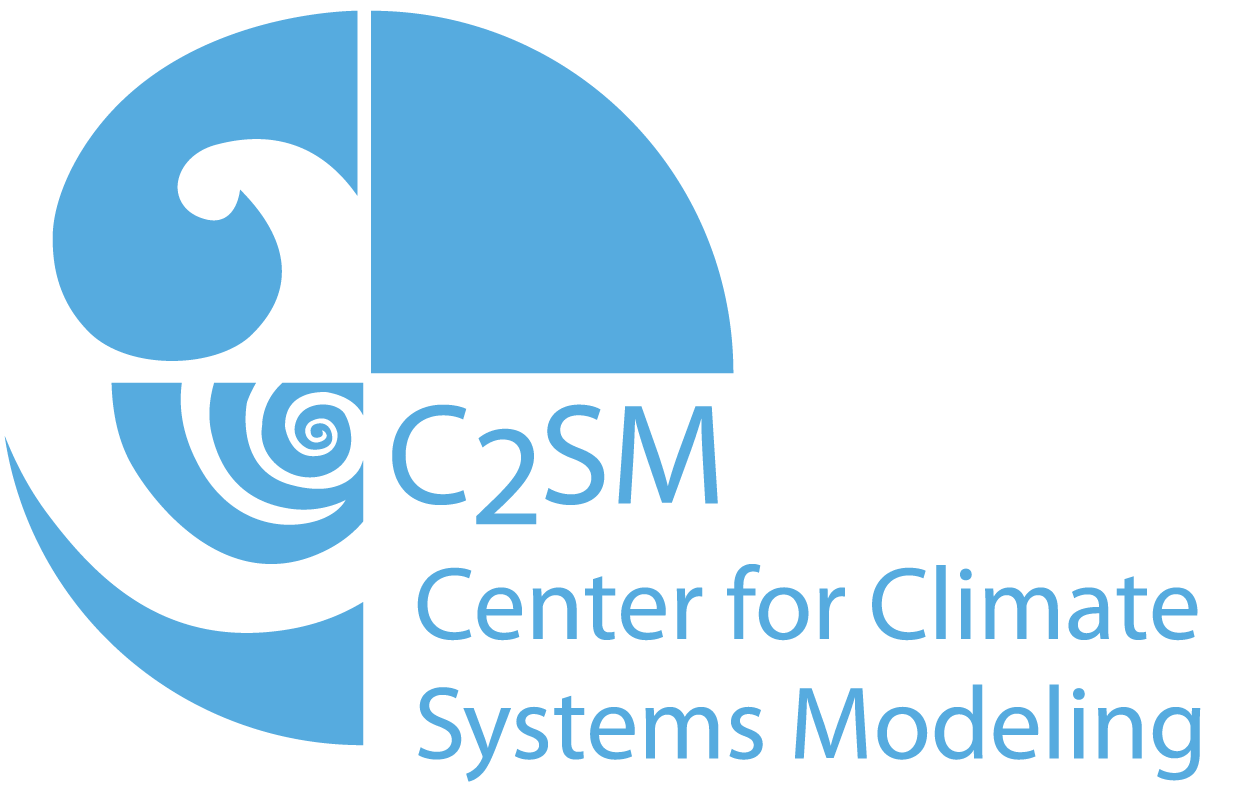
News from the Steering Committee
From 2017 onward, the C2SM newsletter will regularly include information from the Steering Committee (SC) meetings and about the decisions that have been taken.
- In December 2016, ETH School Board decided to support C2SM for its third phase, i.e., until the end of 2020, with the funding level remaining the same as previously. However, they declined to transform C2SM into a technology platform at this time, but left this option open for the future. They formulated also the requirements for such a transition, consisting of a full evaluation of C2SM and a clear long-term commitment from the partners. The evaluation is planned for 2019.
- Both Christof Apenzeller (MeteoSwiss) and Brigitte Buchmann (Empa) have resigned from the SC. They are followed by Mischa Croci-Maspoli (MeteoSwiss) and Dominik Brunner (Empa), respectively, who were elected in the plenary meeting in November. We warmly thank Brigitte and Christof for their long-term engagement since the very beginning of C2SM and welcome Mischa and Dominik to the Committee!
- At the plenary meeting in November 2016, the members agreed on rising the fee for the Scientific Visualization (SciViz) services: From 2017 on, C2SM will charge 4000 CHF/person month for Tarun’s work.
The first SC Meeting of 2017 took place on 17 March 2017, the next will be on 19 May 2017.
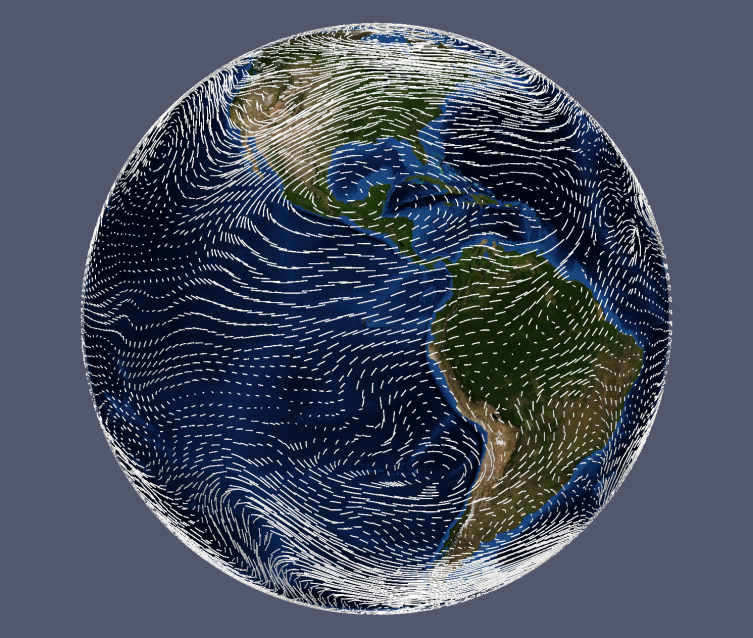
Update from the scientific visualization activities
In the recent months there have been a number of exciting developments. We have worked on visualizations for groups engaged in diverse areas of climate research. This ranges from agricultural sciences to land-climate dynamics.
A tool was developed to visualize the recorded trace gas fluxes for the group of Prof. Nina Buchmann. This tool allows the user to generate 2D and 3D representations of the data. Additionally, it has interactive and animation modes, which enable the user to interact with the 3D geometry and create animations using a custom designed template, respectively.
We have also created an animation for the group of Prof. Sonia Seneviratne. The animation was aimed at highlighting the effect of soil-moisture feeback on global warming. It was used by Prof. Seneviratne in a external pageWerkstattgesprächcall_made. The complete animation is available on the Vimeo channel "external pageClimate Science Visualscall_made", in an English and German version.
Presently, we are working on yet another exciting project. It aims at developing a tool/animation to visualize the impact of tropical cyclones. This project is for the group of Prof. David Bresch.
Apart from working on longer projects we are also providing free-of-charge short duration (up to 2 days) visualization support to individual researchers.
The list of completed, ongoing and planned SciViz projects can be found at the C2SM wiki. For more information on our activities and recent animations, please visit our scientific visualization page https://www.c2sm.ethz.ch/services/visualization.html.

Update: Swiss Climate Change Scenarios 2018
The project “Swiss Climate Change Scenarios CH2018” is gaining momentum. Scientists from MeteoSwiss, ETH, and Uni Bern are combining the latest dynamically downscaled climate simulations EURO-CORDEX with Swiss climate data to establish a new reference on climate change in Switzerland.
A workshop held in November 2016 at ETH with more than 30 participants marked an important milestone in the CH2018 project. Currently, a first draft of a Technical Report on the CH2018 Swiss Climate Change scenarios is being written. It will undergo external review and serve as the centerpiece of CH2018. Further CH2018 products will include a public website and a printed brochure, which aim to carry the key messages of CH2018 to the people and organizations that need to adapt to climate change in Switzerland.
A preliminary project website about CH2018 is available at external pagehttp://www.ch2018.chcall_made. To further enhance the outreach of the project, two new working groups for dissemination and stakeholder dialog were founded. At the recent external pagelaunch event of the report «Brennpunkt Klima Schweiz»call_made, hosted by ProClim in Bern, results and progress of the project CH2018 were presented and discussed with the participants of the event.

New version of ECHAM-HAMMOZ
A new version of the global climate model ECHAM-HAMMOZ (ECHAM6.3.0-HAM2.3-MOZ1.0) has been released on February 16th, 2017. While the ECHAM base code has been updated to its latest available version (including the PSRad radiation scheme and an updated version of the JSBACH soil component), both the HAM (aerosols) and MOZ (tropospheric and stratospheric chemistry) parts have undergone significant improvements.
Most prominent novelties comprise:
- The ability to use two different aerosol microphysics formulations: the modal scheme M7 or the sectional scheme SALSA
- An improved formulation for aerosol - cloud interactions
- The first official version of MOZ. By default, it uses the JAM002 mechanism, which is a blend of stratospheric chemistry from WACCM (Kinnison et al., 2007), tropospheric chemistry from MOZART 4 (Emmons et al., 2012) and further additions. Optionally, MOZ can use the simplified GAM001 mechanism, which is based on the chemical mechanism in ECHAM5-HAMMONIA (Schmidt et al., 2006) with minor adjustments.
- Improved online emissions of dust, sea salt and biogenic emissions
- Support for new prescribed emissions datasets (ACCMIP/MACCITY, GFAS, CEDS)
More information on the release can be found here.
If you are new to ECHAM-HAMMOZ and are interested to getting access to the model, please click this link.
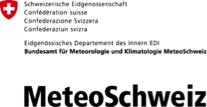
News from MeteoSwiss
New division “Development of Forecasting”
From 1st of March, Mark Liniger is leading the newly established division “Development of Forecasting”. This new division is responsible for the maintenance and further development of tools for the forecasters and for the automatic weather forecast production (such as www and mobile app). This includes scientific developments in model post-processing, downscaling, calibration, verification, nowcasting, etc. Additionally, the division deals with the coordination of the education of weather forecasters. The topic of long-range weather forecasts will move with Mark Liniger to the new division, including Christoph Spirig and Jonas Bhend. The entire division currently consists of 11 persons, located at Zurich Airport, Geneva, and Locarno.
New project: Copernicus Climate Change Service (C3S): MeteoSwiss contributes to the evaluation of seasonal forecasts
Within the project Quality Assurance for multi-model Seasonal forecast products (QA4Seas), MeteoSwiss will contribute to the strategy on how to validate the multi-model seasonal forecasts provided by the C3S. QA4Seas is led by the Barcelona Supercomputing Centre. The project will identify user requirements, perform a gap analysis of the current Evaluation and Quality Control (EQC) information available to users, and develop a prototype of the EQC system. MeteoSwiss leads the work package performing the scientific assessment and gap analysis of seasonal forecast quality. Please check out the external pageC3S websitecall_made or contact Jonas Bhend at Meteoswiss for additional information on QA4Seas. As a feasibility study, internship Kathrin Wehrli (now PhD in the group of C2SM member Prof. Sonia Seneviratne) has developed an external pageonline toolcall_made to explore the skill of the ECMWF seasonal forecasts.
New collaboration: MeteoSwiss and DWD establish the “Consortium for Climate Analysis Tools (ConCAT)”
The ConCAT was founded in December 2016 by the Climate Divisions of MeteoSwiss and DWD. The regular operation and the continuous improvement of climate analysis tools, as well as the evaluation and the quantitative verification of their results are associated with a considerable and constantly growing efforts for the weather services. The efficient use and further development of such tools therefore require increasingly coordinated and joint efforts by climatologists and other experts. The consortium was established to bundle the common interests and to promote faster scientific progress by setting up a central set of climate analysis tools that can be used by its members. First projects within the consortium have already started.

News from Empa
New project: “use of Satellite Measurements of Auxiliary Reactive Trace gases for fossil fuel CARBondioxide emission estimation” (SMARTCARB)
The European Space Agency (ESA) is funding a COSMO modelling study to investigate the potential capabilities of a future CO2 imaging satellite to quantify the emissions from large point sources such as cities and power plants. For this purpose, Empa together with C2SM, MeteoSwiss, and MPI Jena will conduct high-resolution simulations of CO2, CO and NOx over the city of Berlin and power plants in eastern Germany and produce synthetic satellite observations for a range of different instrument and orbit scenarios to support the design of such a mission. C2SM and MeteoSwiss are supporting the project by porting the CO2 transport modules developed in the external pageCarboCount CH projectcall_made to the COSMO GPU code.
Empa’s study on Swiss methane emission inventory published in WMO Greenhouse Gas Bulletin 2016
Since 2010, WMO has initiated the development of an Integrated Global Greenhouse Gas Information System (IG3IS). IG3IS establishes, propagates and improves the methodological standards for how atmospheric transport inverse model analyses of atmospheric GHG concentration measurements (“top-down”) can be combined with spatially and temporally explicit socioeconomic emission inventory data (“bottom-up”) to better inform and manage emission reduction policies and measures. As one successful demonstration of the IG3IS implementation, a external pageWMO Bulletincall_made presents in detail Empa’s inversion system to optimize methane emissions in Switzerland.
New projects: Quantifying emissions of methane and nitrous oxide in Switzerland
Empa has received funding from the Swiss Federal Office for the Environment (FOEN) for two studies to quantify the emissions of methane (CH4) and nitrous oxide (N2O) in Switzerland, respectively. The studies involve measurements from the observation network set up through the project CarboCount CH, new measurements of N2O at the tall tower site Beromünster, and high-resolution Lagrangian dispersion simulations driven by COSMO-7 meteorological fields provided by MeteoSwiss.

New climate science webcasts
Oliver Stebler, part of Reto Knutti's Climate Physics Group at ETH, helps to communicate climate science in his science webcasts ("external pageWerkstattgesprächecall_made"), where he interviews leading experts in climate research and climate related practice and industry. His most recent webcasts include:
- external pageVon der Feldmessung zur globalen Forschungcall_made with Prof. Sonia Seneviratne. Science happens on small and large scales – that is what climate scientist Sonia Seneviratne does. She takes us to the diplomat city Geneva, explains how soil humidity is measured, and tells how the measurements are used to verify global climate models.
- external pageDenkräume und Spiegeleiercall_made: An interview with Prof. Gerd Folkers, Professor of Pharmaceutical Chemistry and President of the external pageSwiss Science and Innovation Councilcall_made. This is not an interview that deals with climate, but with critical thinking in academia. A must for all scientists.
- external pageVision “Null”call_made: Listen to a weather forecast for the year 2100. Prof. Reto Knutti explains why we must not emit CO2 anymore on the long-term to reach the 2° target.
- external pageAuf Spurensuchecall_made: A hike with Prof. Reto Knutti along Gorner glacier in the Swiss Alps presenting philosophical thoughts on climate change.
More climate science webcasts (in German) can be found on the Climate Physics Group's Werkstattgespräche page, or Oliver Stebler's page for climate science communication tools and multimedia productions.
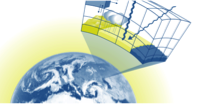
Upcoming events of interest
Announcement: First C2SM GCM User Meeting
We will carry out the first C2SM GCM User Meeting on 27 June 2017. At this workshop, in a similar fashion as at the RCM User Meeting, GCM modeling groups of the C2SM community have the opportunity to present their work. The goal is to strengthen the communication between global climate modelling users in IAC groups and C2SM partner institutions by learning about what are others doing.
Informatiktage
On 16/17 June 2017, through the iexternal pagenformatics dayscall_made Zürich IT companies, high-tech forges, start-ups, universities, and other organisations open their doors to the general public. More than 45 companies have already appealed to the event and will give insights into their informatics daily routine. From C2SM/SIS, Tarun Chadha and Thomas Wüest will participate and present C2SM visualizations to the public.
Swiss Climate Summer School 2017
Applications have been closed. Participants have been selected, and registration for the school has been opened. For more information on this year’s school, visit our page at C2SM.

Paper: How much can we save? Impact of different emission scenarios on future snow cover in the Alps
After long-awaited snowfall in January, the Alps are now covered with fresh powder and happy skiers. But the Swiss side of the iconic mountain range had the driest December since record-keeping began over 150 years ago, and 2016 was the third year in a row with scarce snow over the Christmas period. Christoph Marty, Sebastian Schlögl Mathias Bavay, and Michael Lehning explain in The Cryosphere that bare Alpine slopes could be a much more common sight in the future.
Please also read the corresponding EGU Press Release: external pageLess snow and a shorter ski season in the Alpscall_made
Marty, C., S. Schlögl, M. Bavay, and M. Lehning (2017), How much can we save? Impact of different emission scenarios on future snow cover in the Alps, The Cryosphere, vol. 11, pp. 517-529, external pagedoi:10.5194/tc-11-517-2017call_made.
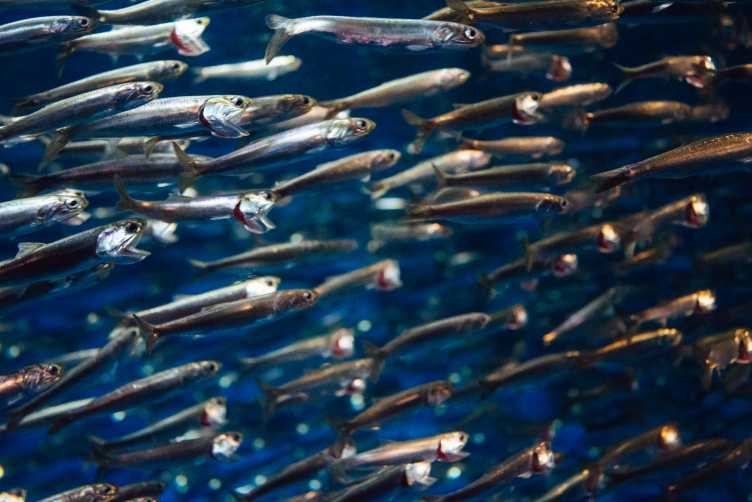
Paper: Large benefits to marine fisheries of meeting the 1.5°C global warming target
Translating the Paris Agreement to limit global warming to 1.5°C above preindustrial level into impact-related targets facilitates communication of the benefits of mitigating climate change to policy-makers and stakeholders. In their recent Science article, William Cheung, Gabriel Reygondeau, and external pageThomas Frölichercall_made show that developing ecologically relevant impact-related targets for marine ecosystem services, such as fisheries, is an important step. They use maximum catch potential and species turnover as climate-risk indicators for fisheries, and project that potential catches will decrease by more than 3 million metric tons per degree Celsius of warming. Species turnover is more than halved when warming is lowered from 3.5° to 1.5°C above the preindustrial level. Regionally, changes in maximum catch potential and species turnover vary across ecosystems, with the biggest risk reduction in the Indo-Pacific and Arctic regions when the Paris Agreement target is achieved.
See also the corresponding ETH-News article (in German)
Cheung, W.W.L., G. Reygondeau, and T.L. Frölicher (2016), Large benefits to marine fisheries of meeting the 1.5°C global warming target, Science, Vol. 354, Issue 6319, pp. 1591-1594, external pagedoi:10.1126/science.aag2331call_made.
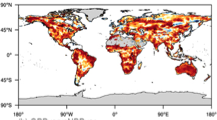
Paper: Hydrological and biogeochemical constraints on terrestrial carbon cycle feedbacks
The feedbacks between climate, atmospheric CO2 concentration and the terrestrial carbon cycle are a major source of uncertainty in future climate projections with Earth systems models. In this article in Environmental Research Letters, Stefanos Mystakidis, Sonia Seneviratne, Nicolas Gruber, and Edouard Davin use observation-based estimates of the interannual variations in evapotranspiration, net biome productivity (NBP), as well as the present-day sensitivity of NBP to climate variations, to constrain globally the terrestrial carbon cycle feedbacks as simulated by models that participated in the fifth phase of the coupled model intercomparison project (CMIP5). The constraints result in a ca. 40% lower response of NBP to climate change and a ~30% reduction in the strength of the CO2 fertilization effect relative to the unconstrained multi-model mean. Overall, the applied emerging constraint approach offers a possibility to reduce uncertainties in the projections of the terrestrial carbon cycle, which is a key determinant of the future trajectory of atmospheric CO2 concentration and resulting climate change.
Mystakidis, S., S. Seneviratne, N. Gruber, and E.L. Davin (2017), Hydrological and biogeochemical constraints on terrestrial carbon cycle feedbacks, IOPScience, Env. Res. Lett., vol. 12, pp. 1-11, external pagedoi:10.1088/1748-9326/12/1/014009call_made.

